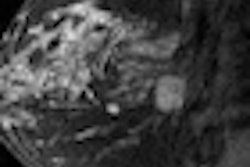Dear AuntMinnie Member,
Do you know the best way to negotiate a better contract with your commercial insurance payor? If you think the main focus should be on rates for imaging services, you might be misguided.
This rather counterintuitive viewpoint comes from medical billing expert John Stiles of HealthPro Medical Billing, who offers his thoughts on contract negotiations in a new article we're featuring in our Imaging Leaders Digital Community.
Mr. Stiles believes that while rates are important, there are many other contractual elements that can affect reimbursements over the life of a contract. For example, pegging your rates to what Medicare pays can be a bad idea -- if you don't do it right. Learn more tips about contract negotiation by clicking here.
In other news in the community, read about a group of sonography students at a college in a Chicago suburb who are charging their program's leaders with unethical behavior. That story is available by clicking here, or by visiting the community at leaders.auntminnie.com.
MRI contrast reactions
When the first cases of contrast-related nephrogenic systemic fibrosis (NSF) began surfacing in 2006, many imaging facilities debated switching to a new MRI contrast product. A new study indicates at least one site actually experienced a jump in contrast reactions after changing -- although not for the reason you might expect.
Researchers from the University of Michigan found that rates of contrast reactions more than quadrupled after they switched their preferred MRI contrast supplier in 2009. That spike didn't last long, however, and the number of reactions later settled back to a rate that was no different, statistically speaking, from the old rate.
The authors believe the spike was due to an epidemiological phenomenon that's common to pharmaceuticals, rather than anything inherent in the particular products they were using. Find out why by clicking here, or visit our MRI Digital Community at mri.auntminnie.com.
Breast density changes
Finally, breast imagers already know that mammography images can look significantly different based on whether they were acquired with film-screen or full-field digital mammography systems. But do those differences also carry over into radiologist estimates of breast density?
It's an important question, as our knowledge grows of the link between breast density and cancer (and our ability to detect it). So the researchers from several U.S. sites decided to test the hypothesis by having radiologists score images from both acquisition methods using BI-RADS breast density categories.
They found that density scores really didn't change that much based on whether analog or digital mammography was used to acquire the images. Learn more by clicking here, or visit our Women's Imaging Digital Community at women.auntminnie.com.




















